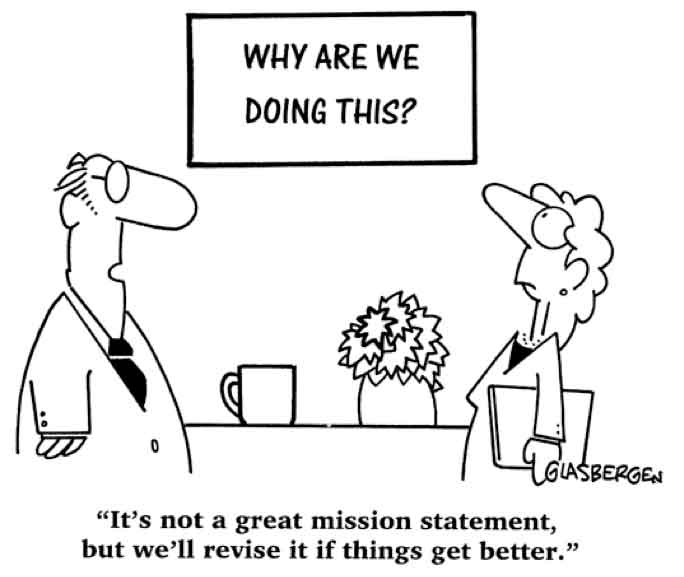How appropriate on the launch of our blog that I come across an article about an interpretive struggle so germane to our EID purpose and principles in the most recent September/October 2017 National Association of Interpretation (NAI) Legacy magazine. This “purpose” struggle is at the core of the often forgotten role of the interpretive designer and a critical first step for future success.
Chris Smith’s article reflects on his year- old curator position at a large museum “without a strong identity to guide my interpretation, I have struggled to tell the stories of specimens and research projects.” In contrast, in a previous position at the Duke Lemur Centre he recalls a “clear sense of purpose that drove the meaning behind my encounters with visitors.” What resulted was “an experience that spread throughout the community as a must-do activity.” Don’t we all want to be able to say that statement with confidence?
Lack of Purpose
One of the EID’s principles - clarify the site’s reason for being - would address the lack of purpose being expressed by curator Chris Smith and his desire to resolve the identity crisis of the museum. You need to get a handle on the distinguishing characteristics of your site. What is worthy of admiration and worth celebrating? Here are a few techniques I have found useful to help clarify that reason for being.
☼ Make a list of heritage assets only your site has.
Local experts in many fields might need to be consulted and skilled interpretive designers can play an important role during this exercise.
☼ Define what your site stands for and the attributes you are dedicated to protecting and promoting.
It is the foundation upon which your organization creates connections with visitors, and potential members, donors, sponsors, and volunteers.
☼ Identify what makes your place special to your staff, board and stakeholder ambassadors.
Ensure the sensory, perceptual, and visceral aspects of the visitor are considered. What is important for them to see, smell, touch, taste, hear, feel inside, and understand about your defining characteristics. This can be a great start to providing justification for your existence.
☼ Have everyone make a list of what your various visitor types should take away.
Having a clear picture of what your ambassadors believe is critical for visitors to leave your site with, can be a creative eye-opener. Sharing and comparing your previous lists of site significance and defining characteristics with this overall perception can lead to a unified position. If you have not done this recently at your facility, you should. You may be surprised at the range of responses you receive and the positive resolution that takes place as a result.
Revisit Your Mission
Knowing why your site exists is a major step forward and puts you on a solid foundation. We recommend you revisit and reinvigorate your mission. I can hear the moans and groans already. I can visualize the fingers being placed down numerous throats. This can be treated as a painful drawn out wordsmithing exercise or as an inspiring, short, team building session. We prefer the latter. You don't just write a mission statement. You live it and breathe it.
Steve Van Matre, in his influential book, Interpretive Design: The Dance of Experience, declares that a mission statement expresses why the site is valuable and what drives a place to achieve its purpose. Van Matre believes visitors undertake a dance of anticipation when embarking on a leisure journey to visit a heritage jewel. He implores us to place ourselves in the visitors’ shoes and answer, “Why are we dancing here?” He states “A jewel without a mission becomes a bauble.” Baubles get thrown away and forgotten.
The result of clarifying your site’s reason for being is so your visitor can not only dance enthusiastically on site, but also be in tune with the site’s mission. This motivational movement should be thought of throughout the visitor journey from anticipation before the visit, entrance appeal, on site exploring, exit feelings of gratitude for a time well spent, to remembering the experience.
Once we know our reason for being, then we can begin to frame the deep connections needed to accomplish visitor feelings of belonging, relating and comprehending. Only then might we engender in the visitor a sense of cherishing their heritage, the desire to return again, and a willingness to provide continued support. When interpretive design captures this, then its value has impact and you are on the path to success.
Differentiate or Die
In addition to knowing your defining site attributes, the site’s reason for being is also very much wrapped up in answering:
☼ What is the promise only you can make?
☼ What can you do better than anyone else?
☼ Why do/should people come to you?
This will put you on solid footing when you justify your interpretive design plans based on how you are different in the leisure journey marketplace. As marketers point out, this helps immensely when positioning your site among other sites competing for your visitors’ time. This plays an important strategic role, during the day- to- day reality of time competition.
Colleen Dilenschneider, cultural institution consultant and popular producer of the Know your Bone website says, "Organizations that highlight their mission financially outperform those marketing primarily as attractions!" Her site has the market research to prove her statements. Colleen often refers to the importance of making sure everyone is on the same page about brand values and reputational equities, which is just business speak for knowing what your site stands for and what it cares about (i.e. reason for being).
CRAP CAUTION: Knowing your site’s reason for being is the foundational piece to differentiate you from the pack. What you have, and how you engage your visitors, needs to stand out. Speaking ecologically, you must determine your niche.
To be continued,
Interpreteer Bill



